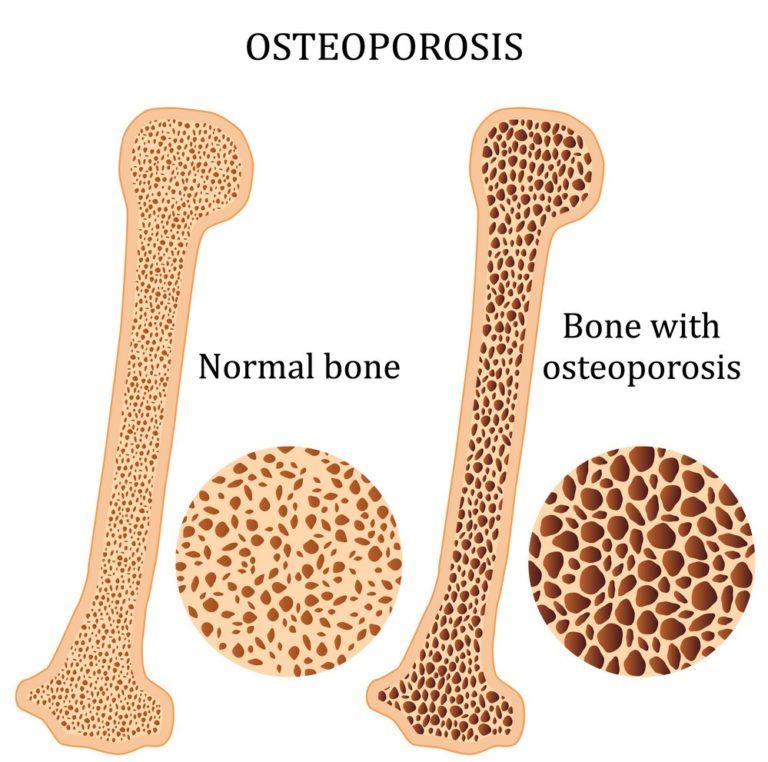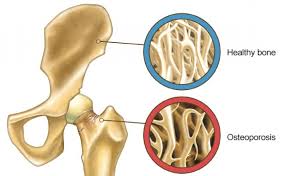Concern for Bone Health in Young Women: A Synergy Between Nutrition and Exercise.
On a daily basis do you drink 3.5 cups of milk? Eat 7 slices of cheese or 2 tubs of yoghurt? What about if you do not like dairy products? If this is the case do you consume 333 almonds, 300g of canned sardines or 1kg of bok choy in an average day? Chances are that majority of young women reading this article said no to each of those questions! The most recent national survey conducted by the Australian Bureau of Statistics (ABS) about bone health in women found that on average the calcium consumption of each age group of women was significantly lower than the recommended daily intake (RDI)

Why Calcium Intake Matters for Peak Bone Mass and Osteoporosis Prevention.
On average, young women (19-30 years of age) are only consuming 643mg of calcium/day when the RDI for this age group is 1000 mg/day. Therefore most young women are falling short of approximately 400mg of calcium each day! So why is this a problem? Well, it is fairly common knowledge that low levels of calcium lead to a much greater risk of developing osteoporosis, with women being at an even greater risk (approximately five times higher than men.)
Due to a decrease in the hormone oestrogen with menopause older women are at even greater risk. But why should a young healthy 20-year old female be worried about the effect of menopause, which is approximately another 30 years away? Because their physiological clock for building bone is running out each day! Research has shown that men and women have up until approximately the age of 30 to maximise bone mass, as from this age onwards our bone density naturally begins to decline at a rate faster than we can increase it.
Achieving Peak Bone Mass through Adequate Calcium and Vitamin D Intake and Weight-Bearing Exercise.
Therefore ideally all young adults, especially young women, should be spending their younger years working towards reaching this peak bone mass so when it starts to decline with age and menopause, they would have started with a lot more ‘bone in the bank’ and therefore delay musculoskeletal disease such as osteoporosis. Multiple research studies have shown that the best way of achieving a high peak bone mass is through an adequate intake of calcium and vitamin D, in conjunction with participation in weight bearing exercise
- Bones are made from calcium so to ensure good bone health young women should be aiming for 1000 mg per day. The richest sources of calcium come from dairy products. Clearly young women are struggling with obtaining 1000 mg/day so trying out some of the advice below may benefit you:
- Try making a Smoothie – use reduced fat milk + a tub of reduced fat yoghurt and add your favourite fruits such as berries. This is an easy way of obtaining up to nearly ½ your daily intake at one meal, and is great for people who struggle with drinking plain milk or getting through a tub of yoghurt.
- For a mid meal snack try having crackers with reduced fat cheese teamed with other nutritious toppings such as tomato and avocado.
- Try swapping from toast for breakfast to a calcium fortified breakfast cereal, in which you can add reduced fat milk. Or for a more convenient breakfast try a sanitarium ‘up and go’ popper.
- Try eating your daily fruit serves mixed in with a reduced fat yogurt, or try yoghurt and muesli as a filling mid meal snack.
- Where possible, choose calcium-fortified products.
- Add spinach and tofu to main meals where possible e.g. in a salad or stir-fry etc.
Obtaining Calcium for Bone Health
Obtaining calcium through food sources rather than supplements is better, as food provides other nutrients that keep you healthy. Relying 100% on calcium supplements should be avoided. If you are lactose intolerant try lactose free versions of dairy products such as lactose free milk, yoghurt, cheese and ice-cream. Or if you do not like dairy products try a combination of supplementation with non-dairy calcium sources such as canned salmon with bones, bok choy, broccoli, sardines and calcium fortified juices and cereals.
Tips for Maintaining Bone Health
Another thing to remember: many young women fail to get enough calcium due to chronic dieting. The best calcium sources are dairy products. These are often seen as ‘high fat’. Hence, many cut them from their diet. Young women should note there are reduced-fat dairy options. Examples include skim milk and light cheese. There are also low-fat yogurts. These products are low in energy but high in protein. Protein keeps you fuller for longer. Thus, they’re great for those aiming to lose weight.
- Ensure adequate vitamin D intake, which helps the body absorb the calcium from the food you eat. Vitamin D is produced in your skin when it is exposed to sunlight. You need 10-15 minutes of sunlight to the hands, arms and face, two to three times a week to make enough vitamin D
- Participate in weight bearing activity on a regular basis (at least 2-3 times per week for 30 minutes). Our bones are constantly remodelling themselves to adapt to the forces they experiences. If the bone is not used i.e. the forces it experiences decrease (e.g. in extended bed rest), bone breakdown increases ix. If bone is exposed to forces stronger than those experienced in normal daily living they will adapt by taking up more calcium and building more bone, so that it can withstand the increased forces ix. Therefore, to build bone and subsequently increase your bone mineral density (BMD), you need to expose your bone to stronger loads than that experienced in normal daily living.
Weight-Bearing Activities and Bone Health
Many government websites claim that weight bearing activities such as walking,running and dancing are good for bone health. This is where some controversy lies. These activities can increase BMD in sedentary people and maintain it in the active ones because they’re weight-bearing. But do they expose bones to significant loads? Not necessarily. Often, these loads aren’t beyond what we experience in daily activities. Research indicates these greater loads are essential for bone growth. Consider this: if you run daily, are the forces on one day truly different from another?

Resistance Training and Bone Strength
Research has shown that the stronger you are (i.e. the bigger your 1RM), the stronger your bones are, which is why resistance training is one of the best ways to increase your BMD. As strength has been proven to be correlated with a higher BMD, you can tailor a resistance training program designed for bone strength to increase 1RM strength as much as if safely possible. Studies have shown that light loads less than 60%1RM performed at slow to moderate movement speeds are not sufficient enough to increase BMD,. Rather, loads of at least 70% 1RM appear to be required for an increase in BMD to occur.
Remember that the whole idea of a bone health program is to prevent osteoporotic fractures etc in the future, so a key part of any bone health exercise program should be to load the bones most prone to osteoporotic fractures in old age! This includes the spine, femur, radius, ulna, humerus, clavicle and hip. Therefore exercises such as the squat, deadlift, bench press, dips and push ups should all be considered xiii.
Some recent studies have also found that resistance training with rapid rates of force development is of greater value than conventional lifting (i.e. powertraining)xiii . This opens the door for developing a program, which has a combination of strength and power exercises xiv. Stereotypically, people see weight lifting as a ‘male activity’, but young women should join full body resistance training programs. This will also have great benefits on muscle development as well.
Plyometric Programs and Bone Health
Still not into weight lifting? Some studies have shown plyometric programs to have an even more positive effect than conventional resistance training. This fits with the research showing that bones respond to rapid changes in load more so than do large constant loads. However, some studies find no impact with plyometrics, and researchers still have limited data. Remember to expose yourself to stronger forces than you’re used to. If you do the same thing every day chances are you are not causing enough of a stimulus for bone growth!
- For women already participating in a full body resistance training program and consuming protein to boost muscle mass, remember: high dietary protein can increase calcium excretion through urination. For every 50g increase in dietary protein, a 150mg increase in urinary calcium excretion is possible. Therefore high protein eaters need to be especially careful about consuming the recommended calcium intake.
The Importance of Calcium and Weight-Bearing Exercise for Bone Health
Therefore, the importance of the combination between calcium and weight bearing exercise is obvious. Weight-bearing exercise is essential for building bone. Without activity, extra calcium has limited effect. On the other hand, calcium is vital for bone formation. Without calcium, no new bone forms, regardless of activity. Young women need to understand this exercise-nutrition link. Their current actions impact long-term health. Invisible bones can still suffer. Nutrition and exercise determine peak bone mass. If you lack either, you compromise peak bone mass. This can lead to osteoporosis later. It’s crucial to monitor calcium intake and stay active.
If you are concerned about bone density, a DEXA scan will accurately tell you your bone density. see your GP for a referral.

If you found this article of use, you may also enjoy reading Bulking Up and Gaining Strength, 12 Tips for Successful Sports Coaching, or Strategies for Success.
Learn more about the impact of resistance training and bone health. Check the Cert 3 in Fitness, Cert 4 in Fitness and Diploma of Fitness.
Find out more about the courses we offer on Our Courses page.
